A public service program of:

A public service program of:

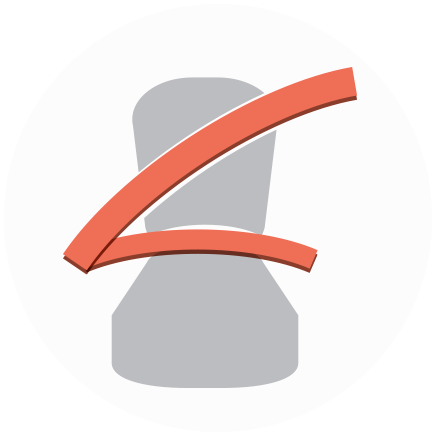 Seat Belt
Seat BeltWhat many parents don't realize is that transitioning a child too early from a booster seat to the seat belt only, can increase the risk of injury or death. Motor vehicle crashes remain the leading cause of death among children in the United States, according to the CDC. [1] According to National Highway Traffic Safety Administration (NHTSA), using a booster seat can reduce the risk of injury in a crash by 45% over a seat belt alone. Remember that in order for the seat belt to work properly it has to FIT properly.
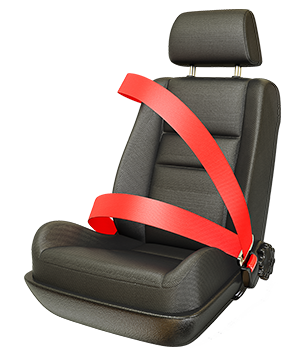
The lap and shoulder belt is also referred to as a 3-point seat belt because it contacts the body in 3 places – at the 2 hips and at 1 shoulder. A lap and shoulder belt offers the greatest protection for the upper and lower body. The shoulder belt portion of the seat belt prevents the body from moving forward in the event of a crash and also helps to spread the crash forces out over a larger area of the body.
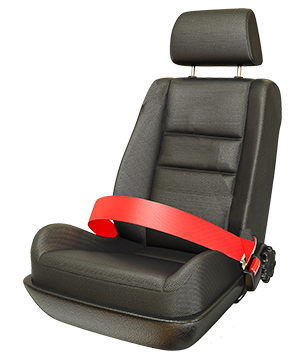
A lap belt only is also referred to as a 2-point seat belt, because it makes contact with the body in 2 places - the 2 lower hips. A lap belt only is less effective than a lap and shoulder belt because it offers protection only to the lower body. It is still safer to use a lap belt only compared to a passenger being unrestrained in a vehicle.
All photos are for demonstration purposes only


Age 8 and at least 4’9” (57 inches) per Georgia law, provided the seat belt fits properly without the use of a booster seat.
Children can transition from a booster seat to using a lap and shoulder belt only when they have reached age 8 and are at least 4’9” (57 inches) tall, as long as the seat belt fits properly.
For a seat belt to fit properly, the lap belt must lie snugly across the upper thighs, not the stomach. The shoulder belt should lie snugly across the shoulder and chest and not cross the neck or face.
The child must be able to sit with their back and hips against the vehicle seat back, their knees bent easily over the front edge of the seat, and sit in position without slouching for the entire ride.
Remember: children ages 12 and under should ride in the back seat. According to the CDC, airbags can kill young children riding in the front seat.
Buckling up is the most important thing you can do to protect yourself in the event of a crash.
Age 8 and at least 4’9” (57 inches) per Georgia law, provided the seat belt fits properly without the use of a booster seat.
Children can transition from a booster seat to using a lap and shoulder belt only when they have reached age 8 and are at least 4’9” (57 inches) tall, as long as the seat belt fits properly.
For a seat belt to fit properly, the lap belt must lie snugly across the upper thighs, not the stomach. The shoulder belt should lie snugly across the shoulder and chest and not cross the neck or face.
The child must be able to sit with their back and hips against the vehicle seat back, their knees bent easily over the front edge of the seat, and sit in position without slouching for the entire ride.
Remember: children ages 12 and under should ride in the back seat. According to the CDC, airbags can kill young children riding in the front seat.
Buckling up is the most important thing you can do to protect yourself in the event of a crash.
View All Stages
Remember that in order for a seat belt to work properly it has to FIT properly.
The shoulder belt portion of the seat belt should lie across the person’s chest between their neck and their shoulder. The lap portion should lie across the top of their thighs.
Studies have shown that a child is generally safest riding in the back seat of a vehicle until at least 13 years old. Your child is ready to transition from a booster seat to the vehicle's seat belt, only when they have reached the height of 4'9" (57 inches) and can fit the seat belt properly. Watch the easy-to-follow video, created by iRideSafe™, to help you properly position and secure your child using the vehicle's seat belt system.
View All Buckling VideosDo they sit all the way back against the car's seat?
Is the shoulder belt centered across their shoulder and neck? (Not across the neck)
Is the lap belt across the top of their thighs? (not across the abdomen)
Do their knees bend at a 90-degree angle at the edge of the car’s seat?
Can they remain seated this way for the entire trip?

Your child’s safety is important to us! Please make sure they are always buckled up and in the appropriate car seat. Below are some additional resources to help keep your family safe on the road.
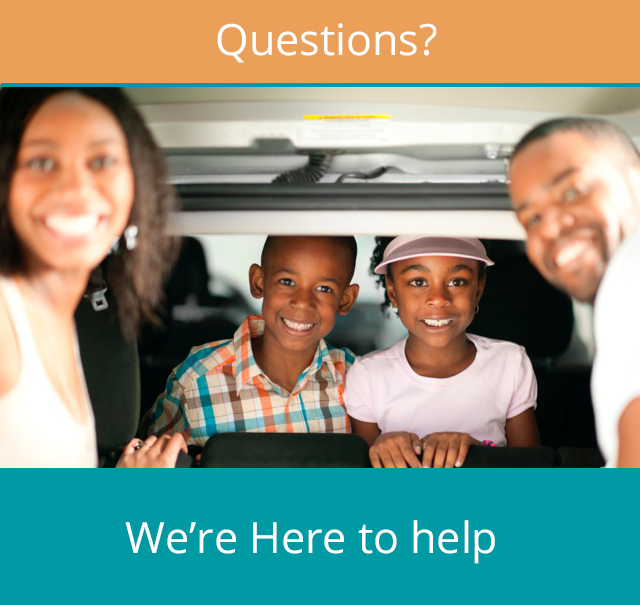
Email: [email protected]
Call: 404-529-6333 Ext. 375
Always wear your seat belt, and make sure everyone else in the vehicle does as well. Buckle up every trip, every time, everywhere!
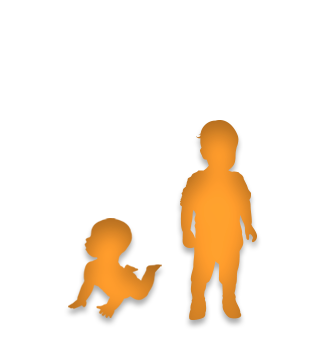
Birth – Until at least 2 years old. Keep your child rear-facing until he or she reaches the maximum height or weight limit allowed by the car seat manufacturer. (Transition to the next stage at approx. age 2).
Remember rear-facing does a better job protecting the child's head, neck, spine and back in a crash.
There is no need to rush to move on to the next car seat or booster seat.
Children under age 2 should ALWAYS ride in a rear-facing car seat in the back seat of the car. Never place a rear-facing car seat in the front seat. Consult your vehicle owner's manual for further information.
The American Academy of Pediatrics (AAP) recommends that all children under the age of 2 should remain in a rear-facing car seat, and that children 2 and older should continue to ride rear-facing as long as possible, until they reach the maximum height or weight limit allowed by the car seat manufacturer. [2]
"A rear-facing child safety seat does a better job of supporting the head, neck and spine of infants and toddlers in a crash, because it distributes the force of the collision over the entire body", according to the AAP.
When purchasing a rear-facing car seat, please note that there are different types available:
Birth – Until at least 2 years old. Keep your child rear-facing until he or she reaches the maximum height or weight limit allowed by the car seat manufacturer. (Transition to the next stage at approx. age 2)

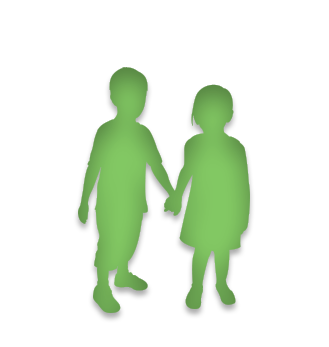
2 years old (approx.) – Until your child reaches the maximum height or weight limit allowed by the car seat manufacturer. (Average transition to the next stage is at approx. age 5).
The American Academy of Pediatrics recommends that "all infants and toddlers ride in a rear-facing car seat until they are 2 years of age or until they reach the maximum height or weight limit allowed by the car seat manufacturer." [3]
Once your child has outgrown the rear-facing car seat, he or she should ride in a forward-facing car seat, in the backseat, and until your child reaches the maximum height or weight limit according to the forward-facing car seat manufacturer. Remember that with every step forward there is a reduction in the level of protection and safety, so don’t rush to the next stage.
Types of forward-facing seats include: forward-facing convertible, combination car seats and all-in-one. Whichever type you select, be sure to check the height and weight limits to ensure the proper usage for your child.
According to National Highway Traffic Safety Administration (NHTSA) 3 out of every 4 car seats are not properly secured [4]. Don’t take any chances! Get to know your car seat.
Protect your smallest passengers. It's important to always have your child properly restrained in a car seat or booster seat until the age of eight (8) while traveling on the streets, highways, and byways. In Georgia, it's the law. [5]
2 years old (approx.) – Until your child reaches the maximum height or weight limit allowed by the car seat manufacturer. (Average transition to the next stage is at approx. age 5)

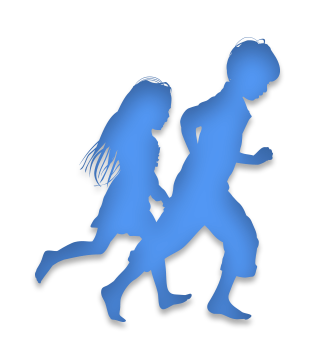
5 years old (approx.) – Age 8. Children under the age of 8 are required by law to ride in a car seat or booster seat appropriate for their height and weight, unless the parent has written documentation that the child is over 4’9” (57 inches).
Your child is ready for a booster seat once they have reached the maximum height or weight limit for his or her forward-facing car seat. Remember that with every step forward there is a reduction in the level of protection and safety. So don't rush to the next stage.
Georgia law requires that all children under the age of 8 whose height is less than 4'9" (57 inches) are required to be in either a car seat or a booster seat suitable for their age, height and weight and must ride in the backseat of a vehicle.
When using a booster seat, make sure the lap and shoulder belt fits properly. The lap belt must lie snugly across the upper thighs, not the stomach. The shoulder belt should lie snugly across the shoulder and chest and not cross the child's neck or face.
Many booster seats have a weight range starting at 30-40 pounds, with a maximum weight of 80-100+ pounds. The National Child Passenger Safety Board [6] recommends keeping your child in a booster seat until the vehicle seat belt fits your child properly, and he or she is mature enough to sit without slouching for the entire ride.
5 years old (approx.) – Age 8. Children under the age of 8 are required by law to ride in a car seat or booster seat appropriate for their height and weight, unless the parent has written documentation that the child is over 4’9” (57 inches).
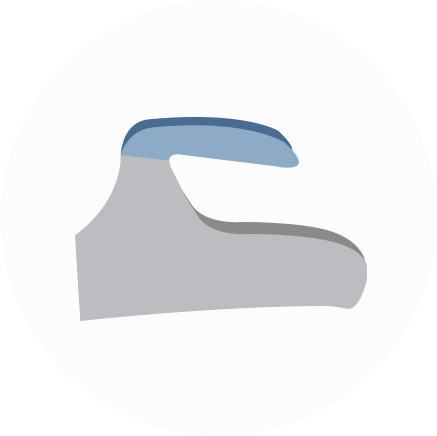

Age 8 and at least 4’9” (57 inches) per Georgia law, provided the seat belt fits properly without the use of a booster seat.
Children can transition from a booster seat to using a lap and shoulder belt only when they have reached age 8 and are at least 4’9” (57 inches) tall, as long as the seat belt fits properly.
For a seat belt to fit properly, the lap belt must lie snugly across the upper thighs, not the stomach. The shoulder belt should lie snugly across the shoulder and chest and not cross the neck or face.
The child must be able to sit with their back and hips against the vehicle seat back, their knees bent easily over the front edge of the seat, and sit in position without slouching for the entire ride.
Remember: children ages 12 and under should ride in the back seat. According to the CDC, airbags can kill young children riding in the front seat.
Buckling up is the most important thing you can do to protect yourself in the event of a crash.
Age 8 and at least 4’9” (57 inches) per Georgia law, provided the seat belt fits properly without the use of a booster seat.
Children can transition from a booster seat to using a lap and shoulder belt only when they have reached age 8 and are at least 4’9” (57 inches) tall, as long as the seat belt fits properly.
For a seat belt to fit properly, the lap belt must lie snugly across the upper thighs, not the stomach. The shoulder belt should lie snugly across the shoulder and chest and not cross the neck or face.
The child must be able to sit with their back and hips against the vehicle seat back, their knees bent easily over the front edge of the seat, and sit in position without slouching for the entire ride.
Remember: children ages 12 and under should ride in the back seat. According to the CDC, airbags can kill young children riding in the front seat.
Buckling up is the most important thing you can do to protect yourself in the event of a crash.
Age 8 and at least 4’9” (57 inches) per Georgia law, provided the seat belt fits properly without the use of a booster seat.

Download our printable guidelines
Car Seat Installation Videos:
Visit iRideSafe.com/media-gallery for easy-to-follow videos with steps to help you install your child’s car seat.
American Academy of Pediatrics. AAP Updates Recommendation of Car Seats. March 21, 2011. (cited 2016 December 15)
American Academy of Pediatrics. AAP Updates Recommendation of Car Seats. March 21, 2011. (cited 2016 December 15)
National Highway Traffic Safety Administration. (cited December 20, 2016)
Governor’s Office of Highway Safety in Georgia. (cited 2016 December 15)
http://www.gahighwaysafety.org/campaigns/child-passenger-safety/
National Child Passenger Safety Board (cited 2016)
CDC. Web-based Injury Statistics Query and Reporting System [online]. National Center for Injury Prevention and Control, Centers for Disease Control and Prevention (producer). [2016 Aug 16].
CDC. Web-based Injury Statistics Query and Reporting System [online]. National Center for Injury Prevention and Control, Centers for Disease Control and Prevention (producer). [2016 Aug 16].
American Academy of Pediatrics. AAP Updates Recommendation of Car Seats. March 21, 2011. (cited 2016 December 15)
American Academy of Pediatrics. AAP Updates Recommendation of Car Seats. March 21, 2011. (cited 2016 December 15)
National Highway Traffic Safety Administration. (cited December 20, 2016)
Governor’s Office of Highway Safety in Georgia. (cited 2016 December 15)
http://www.gahighwaysafety.org/campaigns/child-passenger-safety/
National Child Passenger Safety Board (cited 2016)